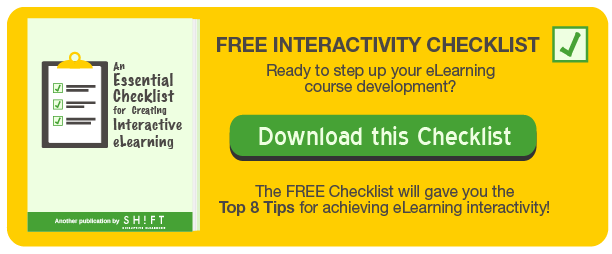The reasons why we decided to develop an eLearning course may vary depending on the context in which we are. But many companies often make the decision because they detect certain areas where employee performance does not meet the expected standards. For this reason, it becomes necessary to train employees to transform attitudes, skills, expectations or paradigms, and thus improve performance.
Once the reason why they require the eLearning course has been specified, the next step is to set objectives in order to meet the goal. Having clear objectives means understanding the desired results and how to get there.
A key part of a successful eLearning implementation program is knowing what you want to get out of it, since this will drive your actions and help you measure progress.
Some of the benefits of establishing objectives before starting developing your eLearning courses are:
- They point out what should be taught (content), thus guiding the teaching-learning process and gives meaning to the learning activities.
- They specify goals to reach and criteria for evaluating (number, quality and emphasis).
- They determine the necessary support media and facilitate resource selection.
- Basically your course content is determined by the objectives you set. You don’t’ only need a great looking course but great content is also a must. In order to have great content you need to have clear objectives.
- They help organize the content into chunks, modules, sections or units.
- As well, they ensure that no content is left behind (every piece of content responds to a certain objective.)
To build these objectives, we recommend considering the ABCD Model :
Audience: Who needs to learn it?
Include in your goals who are your learners. Just describe the intendend learner or end user. At this point it’s not necessary to make a complete analysis of the target audience; it only requires identifying the audience of the course and what they will be able to do after completing the course.
Behavior: What they need to do?
The keyword here is: do, not “know”. Spell out in your objectives what the student is expected to do with what they learn in the course.
Measurable! Use words that allow you to actually measure results, words that will help you measure if the student understood the content. Successful objectives state what the learner will be able to do. Try using actions verbs like "Identify a valid explanation of...." or “Specify the factors of…” or “Define the following concepts”. It’s easier to write the evaluative question for an exam that way.
Some other examples:
… Should be able to write a report…
… Should be able to describe the steps...
To determine your objectives and actually measure their success, you need to compare your current results (where you are right now) and your expected results (where you wish to be). Once you have clear the different and what you need to do to go there, you will gather the right content for the course and therefore, build the a course that is effective and measurable.
Condition: What tools and resources are in play?
It’s important you define under what circumstances or context will the learning occur. Specify what will be given to the learner or what are they expected to know before they accomplish the learning.
Most eLearning courses require some prior knowledge or experience on the part of the student. Consider these characteristics when setting your objectives in order to avoid making assumptions about students. This allows you to raise achievable goals and develop the content needed for the student to obtain the prerequisite.
Degree: How will you measure to determine completion?
Last but not least, you must specify how much will be accomplished, how well must it be done, and to what level. This basically states the standard for acceptable performance (ex: time, accuracy, quality).
-
Example: … without error.
-
Example: … 9 out of 10 times.
-
Example: …within 60 seconds.
Define where you are heading! But note that to reach your goal you must be clear where you are right now.









